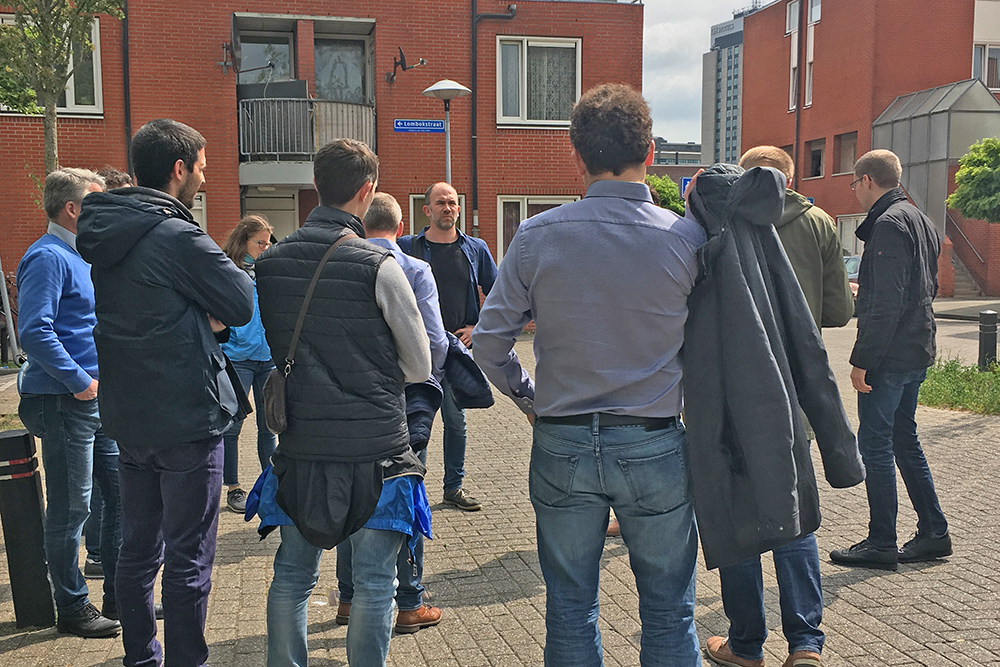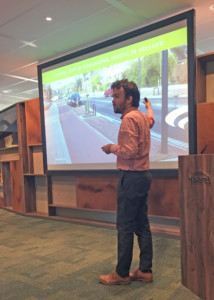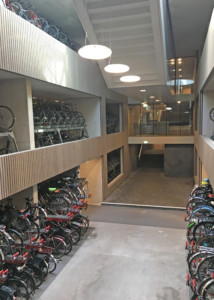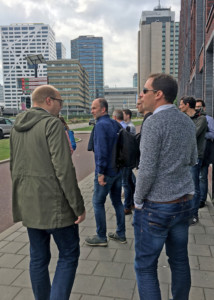Behavioural change / Bike Strategy / Cycle culture / Cycling / Cycling Education / Cycling infrastructure / Developments / Facilities / Infrastructure / Innovation / Innovative / Mobility / Public Spaces / Traffic safety / Urban Mobility Design / Workshop
Sharing Knowledge Across Borders: A summary of our visit with delegates from Luxembourg delegation

On Wednesday, May 22nd, Mobility Consultants Lennart Nout and Sophie Simon had the pleasure of showing delegates visiting from Luxembourg around Utrecht, the fourth largest city in the Netherlands and the national hub for rail travel. The tour was organized by the Luxembourgish Ministry of Transport and included professionals from varying backgrounds such as engineers, planners, and individuals from the municipalities of Luxembourg City and Esch sur Alzette. Also in attendance were members of the Luxemburgish bike association Lëtzebuerger Vëlos-Inititiv.
 The day started at the Movares headquarters next to the central station where their Cycling Expert specializing in Bicycle Parking, Simone Jorink, delivered a presentation focused on bicycle infrastructure, especially parking facilities. Following that, Lennart presented on traffic calming in the Netherlands, demonstrating the different Dutch measures and policies that help to make streets calmer and less focused on the movement of cars.
The day started at the Movares headquarters next to the central station where their Cycling Expert specializing in Bicycle Parking, Simone Jorink, delivered a presentation focused on bicycle infrastructure, especially parking facilities. Following that, Lennart presented on traffic calming in the Netherlands, demonstrating the different Dutch measures and policies that help to make streets calmer and less focused on the movement of cars.
The reason for the delegates visit was to learn more about parking facilities for bikes and to learn about new (or Dutch) methods on calming the streets. Experiencing the highest car-to-person ratio in EU, they hoped to explore new ideas, policies and designs they could potentially implement in Luxembourg to encourage more cycling. Once the presentations were complete, the group went out into the city to see how many of the theories and ideas they had spoken about had been put into practice. Seeing these concepts in real-life helps groups who are beginning their journey to build safer, more cycle-friendly streets better understand how their investments of time, energy and money will lead to greater success back home.

The Luxembourgish delegation split into two groups for a walking tour, each taking turns to experience first-hand the traffic calming and bicycle parking ideas that had learned about earlier. The first-half the tour consisted of a visit to the bicycle parking Stationsplein, the biggest parking garage in the world, boasting 12,500 bicycle-parking spaces with further expansion on the way. In the garage they saw how such bike facilities are organized in order to fit as many bikes as possible, as well as all the other details that are important to take into consideration in getting such a big parking garage to function successfully. They also heard about some of the unexpected failings of the parking garage that will need to be addressed in the future and that the delegation could learn from.
The second-half took the group to the Lombok Oost neighborhood where they saw what a typical Dutch residential street looks like. The aim of this portion of the tour was to show how different measures are applied to streets in order to achieve traffic calming. They experienced a bicycle street, where people traveling by bicycle have priority to space and cars are expected to behave as guests. They also went to a typical Dutch woonerf – a ‘living street’ – that acts as shared space for the residents on the street where the speed limit for cars is 15km/h. The neighbourhood walk allowed the group to see how the Dutch organize different streetscapes with a focus on the bike while simultaneously calming traffic.

Overall, the delegation showed great interest in what our experts had to present, asking a lot of questions to deepen their knowledge and took lots of pictures to reference once they returned to Luxembourg. The tour was a definite success, with the group appearing inspired to implement some of the measures they saw in Luxembourg in the future. They also revealed that since the delivery of the Best Practice Policies Mobycon developed for Luxembourg in late 2016, they have already implemented a number of policies aimed at improving conditions for cycling in the country.
We look forward to staying in touch with the delegation and hearing if they are successful implementing some of the Dutch measures and design elements that they saw during our tour. We are always excited to share our Dutch expertise and help expand concepts to improve cycling accessibility throughout Europe and beyond.

